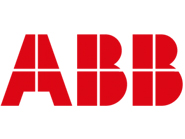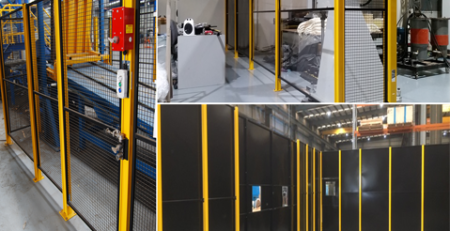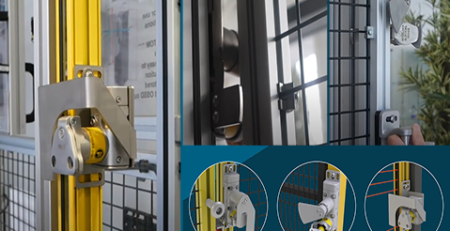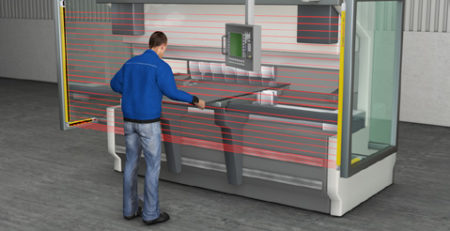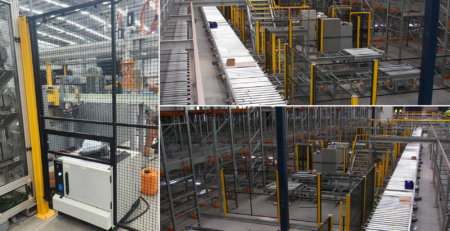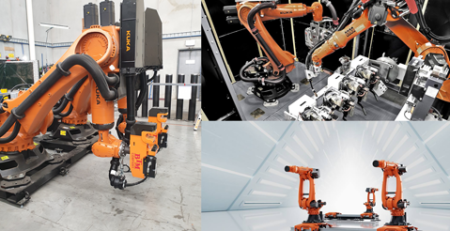Achieving Safety Compliance with ZONE Industrial Safety Fencing

In today’s industrial landscape, ensuring workplace safety is not just a regulatory requirement but a critical aspect of operational integrity. For businesses striving to comply with the stringent AS 4024 safety standards, ZONE Safety Systems Industrial Safety Fencing offers a robust solution designed to meet and exceed these requirements.
Understanding AS 4024 Standards
The AS 4024 series of standards provide comprehensive guidelines for the safety of machinery, emphasising risk assessment, safeguarding measures, and the proper use of protective devices. Compliance with these standards is essential for mitigating risks, preventing accidents, and ensuring a safe working environment.
Practical Applications ZONE Safety Systems Fencing and Compliance with Standards
Manufacturing Plants:
- Application: In manufacturing environments, machinery such as CNC machines, robotic arms, and assembly lines pose significant hazards. Zone Safety Systems Industrial Safety Fencing is used to create protective enclosures around these machines, ensuring that only authorised personnel can access these areas.
- Compliance: According to AS 4024 standards, all moving parts of machinery must be adequately guarded to prevent accidental contact. The fencing system not only restricts access but can also be integrated with interlock systems that automatically shut down machinery if the fence is breached, ensuring full compliance with safety requirements.
Warehouse and Distribution Centres:
- Application: Warehouses often have automated sorting systems, conveyors, and forklifts operating in close proximity to workers. Zone Safety Systems Industrial Safety Fencing is utilised to separate these automated systems from pedestrian walkways, reducing the risk of collisions or other accidents.
- Compliance: AS 4024 mandates that safety measures be in place to protect workers from moving equipment. The fencing helps in delineating safe zones and prevents unauthorised or accidental entry into hazardous areas, ensuring that the operation adheres to the standard’s safeguarding principles.
Food and Beverage Processing Facilities:
- Application: In the food and beverage industry, machinery like mixers, bottling lines, and packaging equipment require strict safety protocols. Zone Safety Systems Industrial Safety Fencing can be used to safeguard these areas, especially where high-speed machinery is involved.
- Compliance: AS 4024 requires that operators be protected from machine hazards, including entanglement, crushing, and shearing points. By enclosing the equipment with safety fencing and using interlock systems, companies ensure that the machinery cannot operate unless all guards are in place, meeting the standards for operator safety.
Pharmaceutical and Chemical Manufacturing:
- Application: In pharmaceutical and chemical plants, safety is paramount due to the presence of hazardous materials and complex processing equipment. Zone Safety Systems Industrial Safety Fencing can be used to protect personnel from exposure to dangerous substances and moving machinery.
- Compliance: AS 4024 outlines stringent requirements for guarding dangerous areas and controlling access to hazardous zones. The fencing provides a controlled environment, preventing unauthorised access and ensuring that safety protocols are strictly followed, thus maintaining compliance with the standards.
How Zone Safety Systems Industrial Safety Fencing Supports Compliance
| AS 4024 Standard | Description of Standard | Application of Zone Safety Systems Industrial Safety Fencing |
| AS 4024.1 – General Principles for the Design of Safety Guards | Establishes the general principles for designing safety guards to protect personnel from hazards. | The fencing provides a physical barrier that prevents access to dangerous machine parts, designed with visibility and durability to ensure compliance with these general principles. |
| AS 4024.1601 – Design of Controls, Interlocks, and Guarding | Outlines the design and use of controls and interlocks to prevent access to hazardous areas during operation. | Zone Safety Systems fencing integrates with interlocks, ensuring that machinery stops if the fence is breached, fully complying with this standard. |
| AS 4024.1801 – Ergonomic Design Principles | Provides guidelines for the ergonomic design of safety systems, considering the comfort and safety of operators. | Fencing systems can be customised for height and access points, ensuring that they are ergonomically friendly for workers, reducing strain and enhancing safety. |
| AS 4024.1201 – Risk Assessment and Reduction | Focuses on identifying, assessing, and mitigating risks associated with machinery. | The implementation of fencing is a direct measure to mitigate risks identified in the assessment process, creating controlled environments around hazardous machinery. |
| AS 4024.1503 – Safety-Related Parts of Control Systems | Specifies requirements for the safety-related parts of control systems, ensuring they perform their safety functions correctly. | The fencing systems work in tandem with safety control systems to ensure that if the fence is accessed, appropriate safety measures (like machine shutdown) are activated. |
| AS 4024.1602 – Interlocking Devices with and without Guard Locking | Describes the requirements for interlocking devices to prevent access to hazardous areas. | Zone Safety Systems fencing can be equipped with interlocking devices that prevent machinery from operating unless the fence is securely closed, ensuring compliance with this safety measure. |
| AS 4024.1901 – Minimum Gaps to Avoid Crushing | Defines the minimum gap sizes to prevent the risk of crushing between machinery and guards. | The fencing design adheres to these gap requirements, ensuring that gaps between the fence and machinery are within safe limits, preventing crushing hazards. |
| AS 4024.1401 – Prevention of Unexpected Start-up | Ensures that machinery does not start unexpectedly, especially when someone is in a hazardous area. | The fencing system integrates with control systems to prevent machinery from starting if the fence is breached, maintaining compliance with this critical safety standard. |
PLEASE NOTE: While all care has been taken to provide accurate information, please undertake your own checks to ensure safety requirements meet your specific needs.
GET IN TOUCH
We Can Help!
Contact us to request a quote or to schedule a consultation with our team.


P: +61 3 8360 8533 | W: celltec.com.au | E: sales@celltec.com.au
Truganina (HQ) | 6 Paraweena Drive, Truganina VIC 3029








